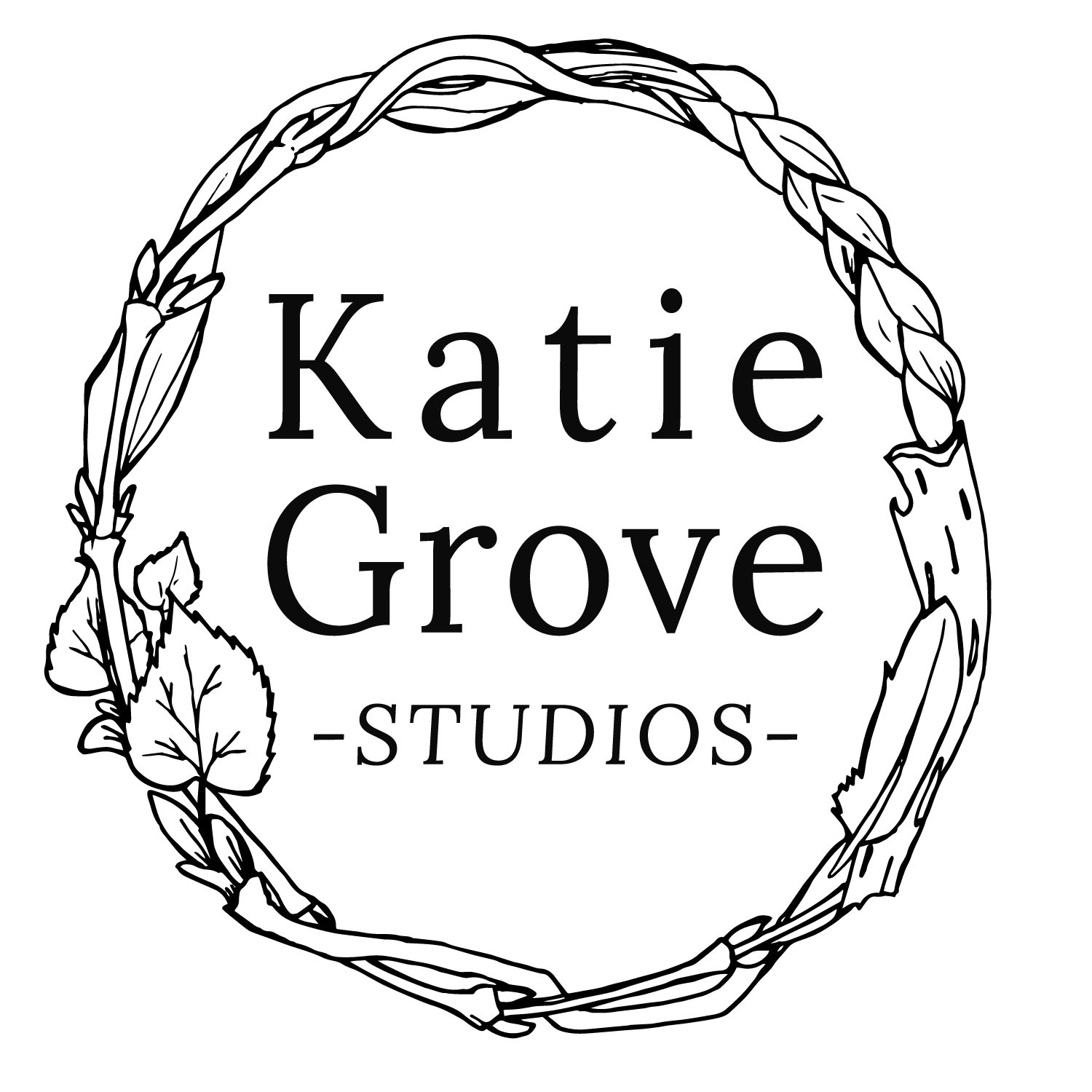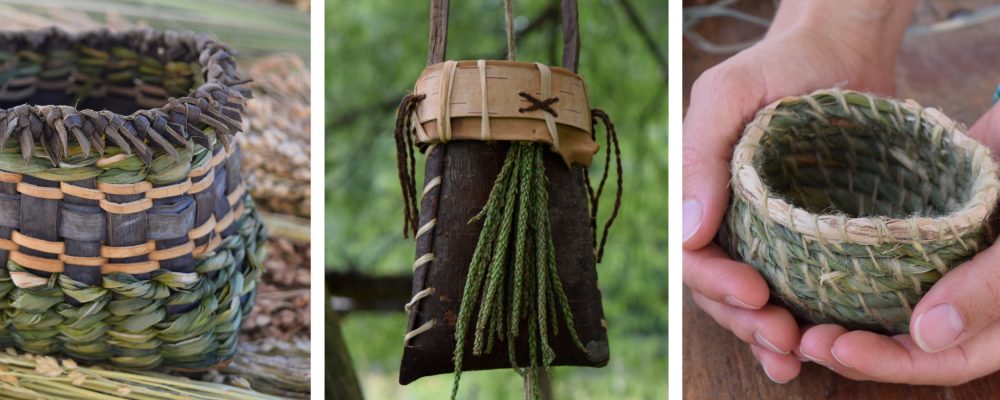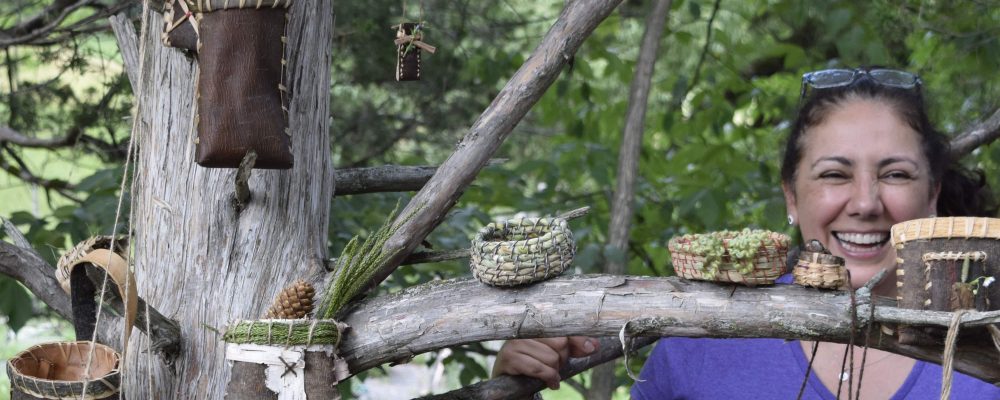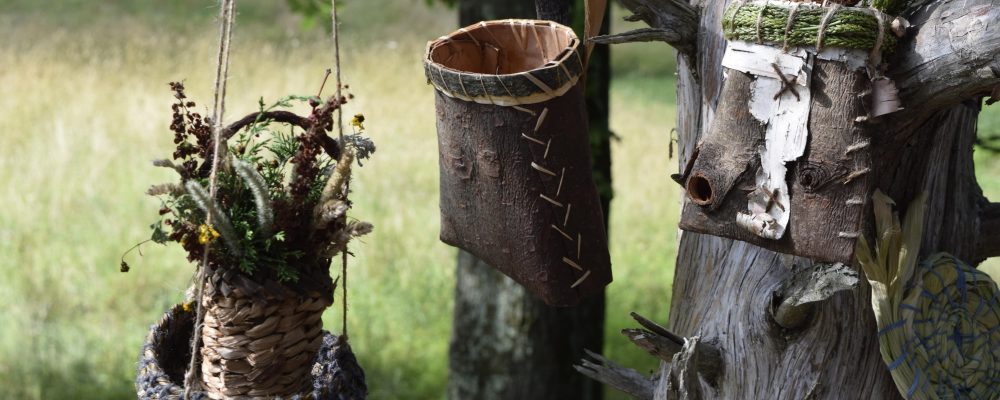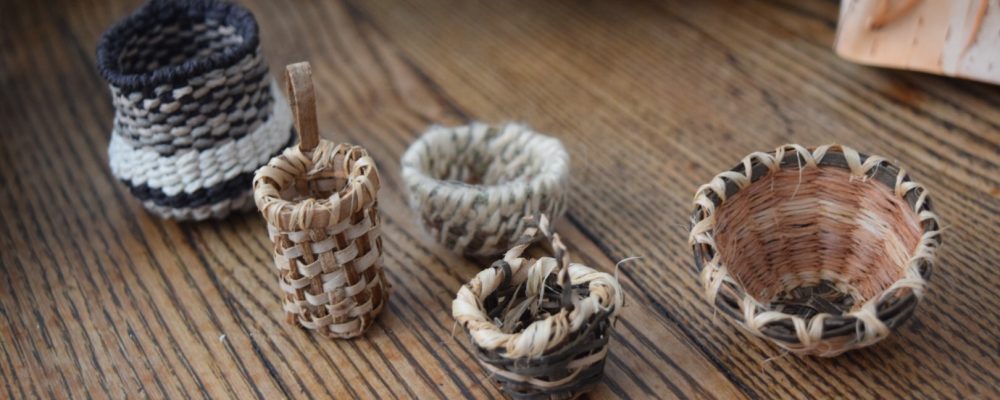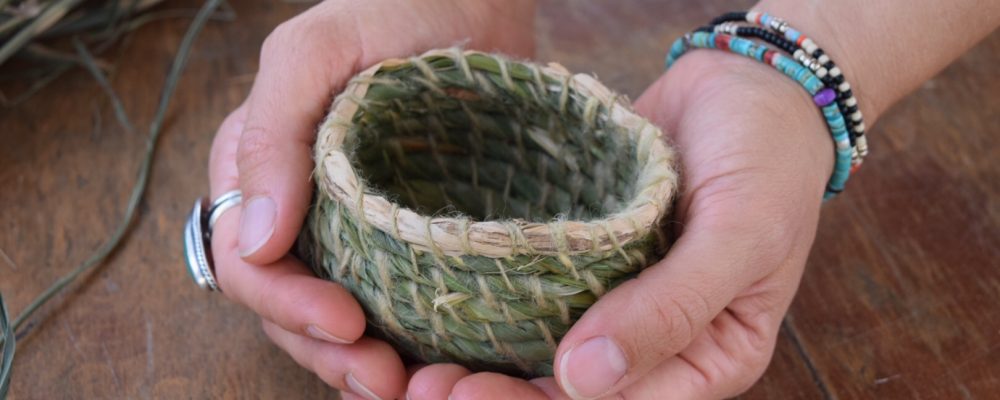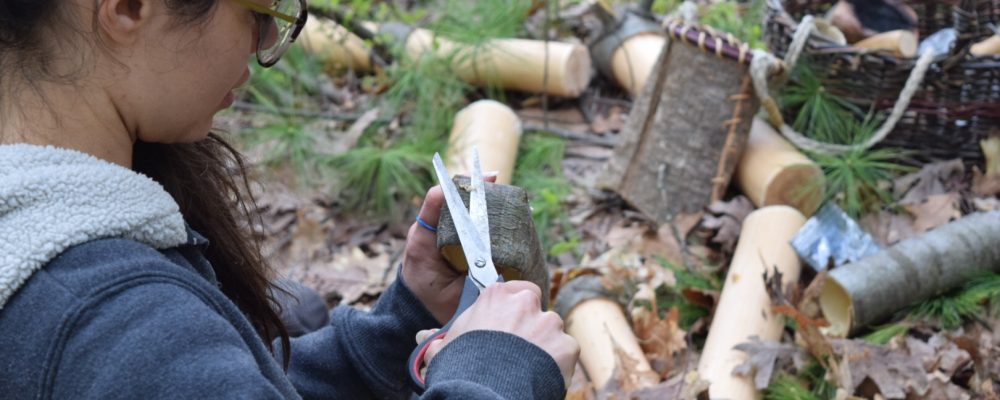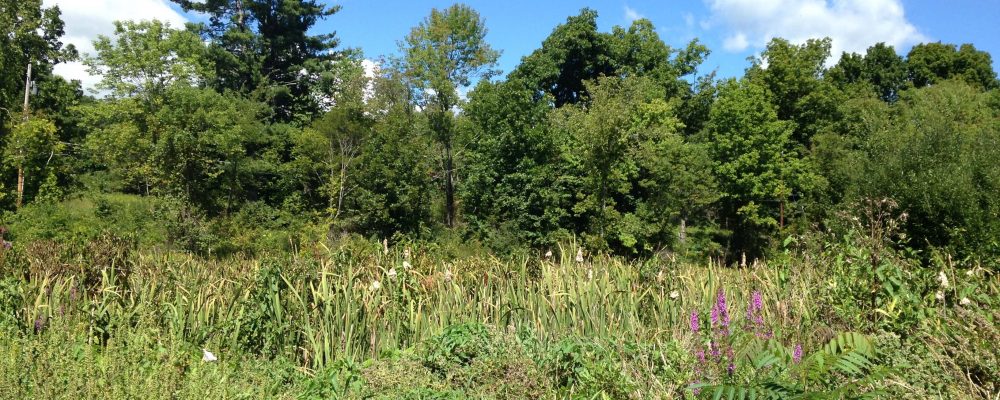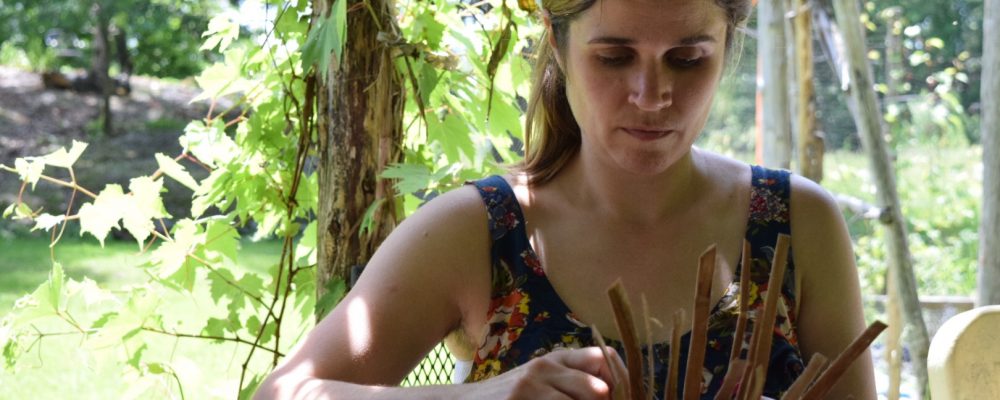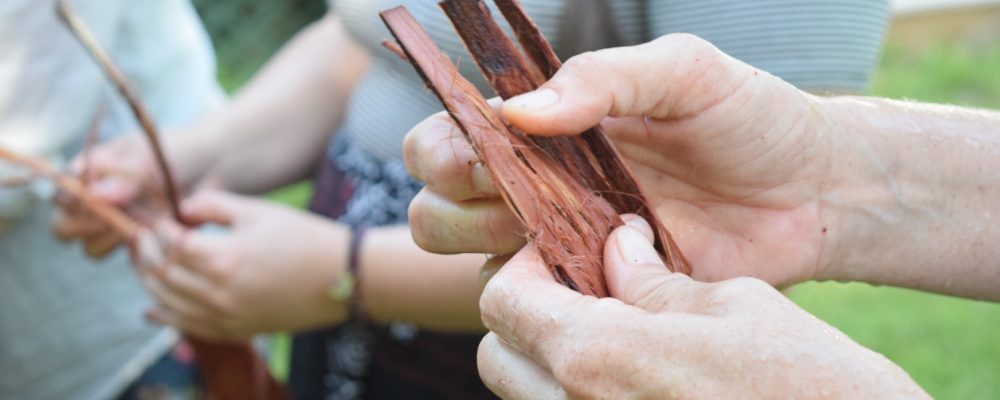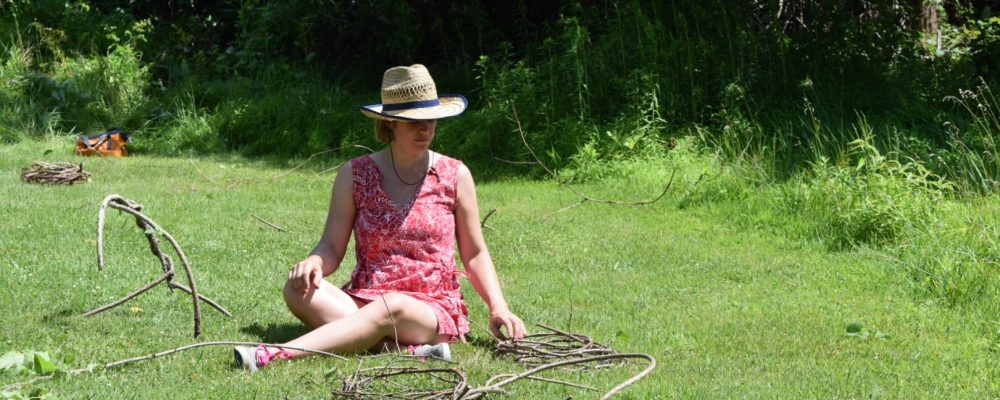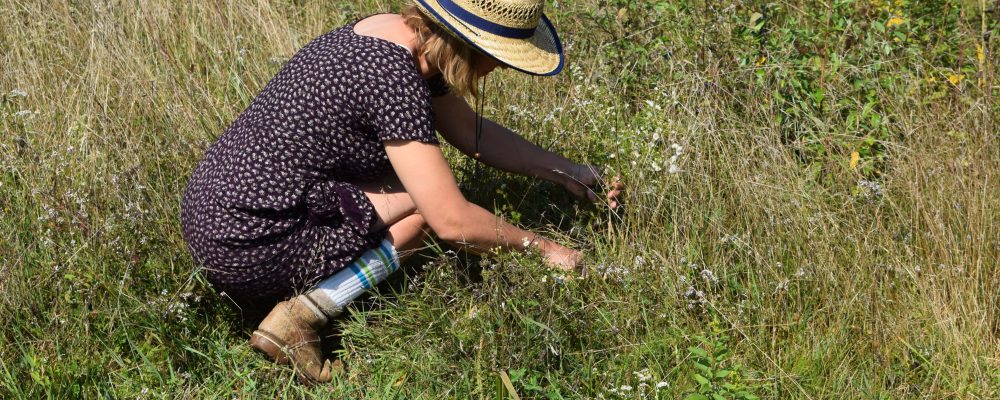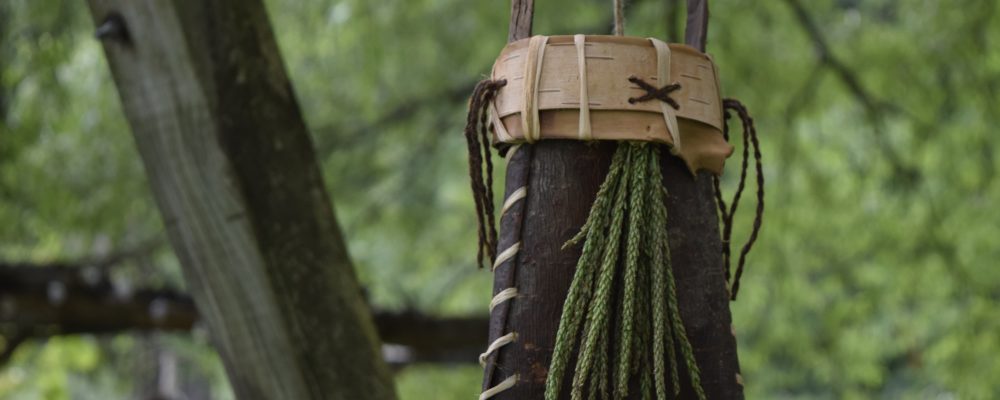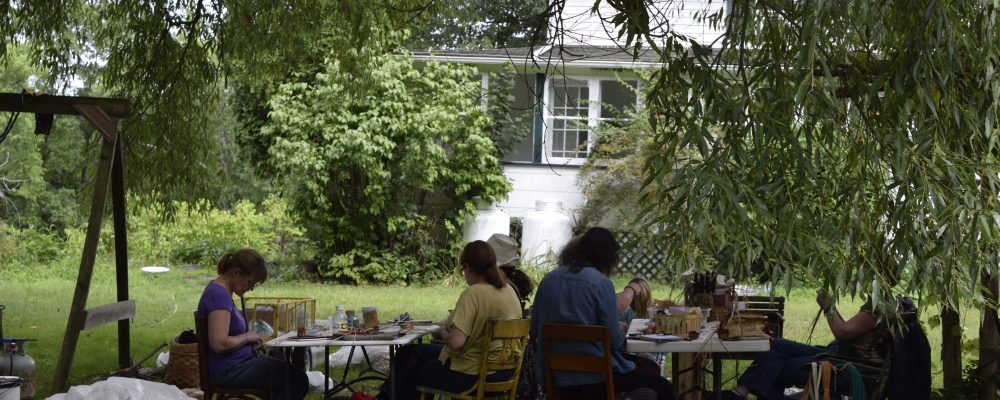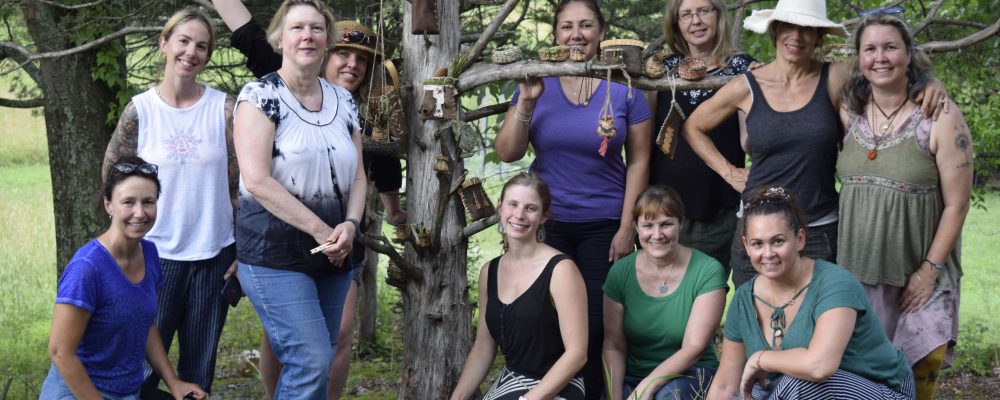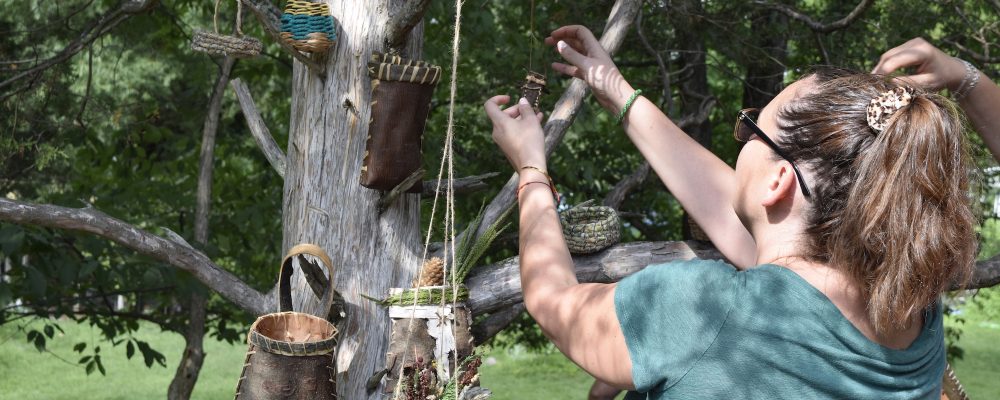Making the Baskets: Coiling, Twining, and Folded Bark
Over the course of the weekend you will…
Gain a well rounded understanding of three basic basketry techniques as well as making cordage and several variations within each technique.
Work with a variety of materials, including cattails, grasses, iris leaves, basswood fiber, white pine bark, red osier dogwood, inner bark of a variety of trees, including ash, tulip poplar, hickory, and more.
Go on at least one land walk to harvest some materials for our baskets that are in season while discussing harvest times and techniques for others.
Leave with several finished baskets as well as the knowledge and inspiration to continue to create baskets with wild harvested plants
COILING
In our first basket you will be introduced to the wonderful and incredibly versatile technique of coiling. Coiling is an ancient technique in which rows of material are layered and sewn together one row at a time in a spiral to create a basket. In this class we will use split cattails, grasses, iris leaves, and a variety of other seasonally available materials as the core of our baskets. Several open work stitching techniques will be covered, including line stitch, v stitch, and core wrapping to create a variety of patterns over the corse materials. We will also discuss how to harvest and prepare cattails and grasses for coiling.
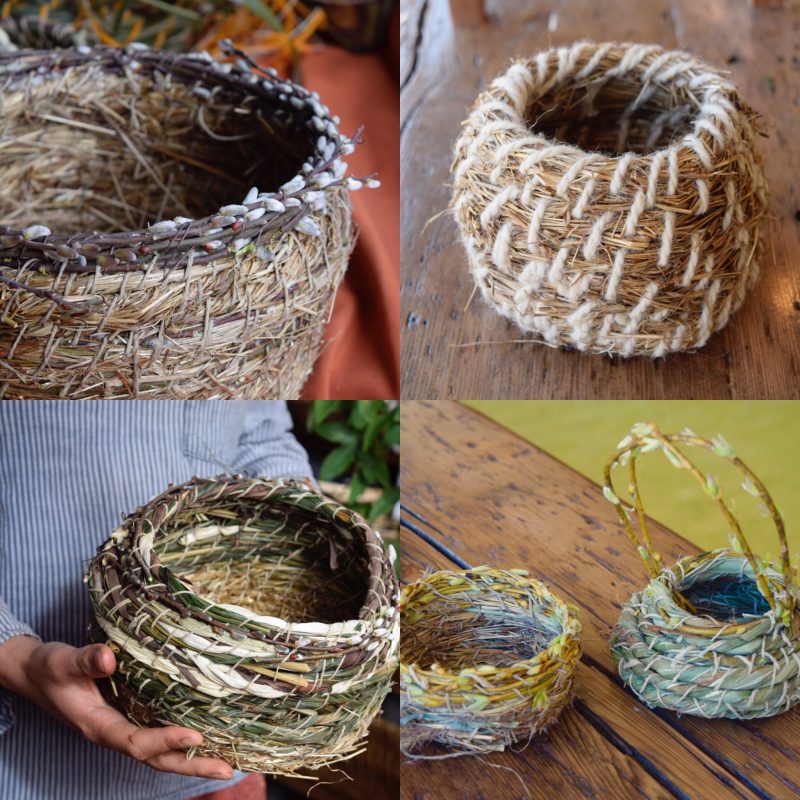
TWINING
Twining is technique in which two weavers are twined around splints to create a tightly woven and solid basket. Used by people all over the world, twining is a technique that can be adapted to use with many different long flexible materials. In this class we will use locally harvested cattails, basswood fiber, dogbane, and other materials for weavers and inner tree bark from a variety of tree species for the stakes . Both two and three strand twining will be used. This is a great technique for either creating a small sized or several miniature baskets.

FOLDED WHITE PINE BARK
Making containers using different kinds of tree bark is an ancient practice. During this workshop we will created folded bark baskets using primarily white pine bark. You will learn how to fold and sew the bark and attach a rim to make a beautiful container in a variety of shapes. We will cover how to design a basket pattern and find and harvest different kinds of bark.
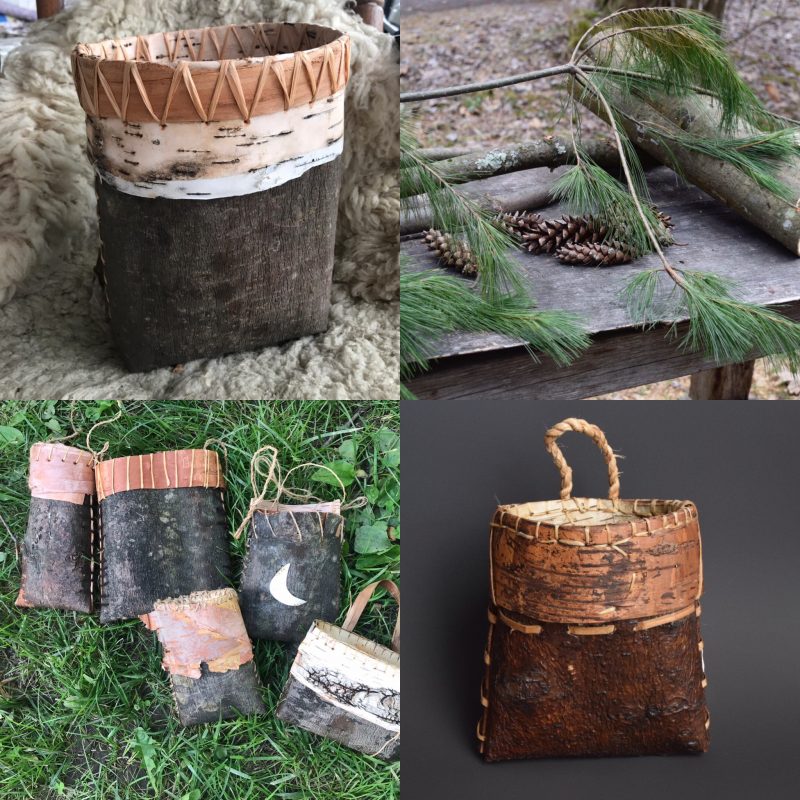
What does it look like to make a basket?
To see some examples of baskets and student experiences from single day workshops check out the blog posts below or visit my current/past workshops page. There is such an amazing array of students that take my classes and I’m always impressed with the creativity and individuality that comes out when a person sits down and allows themselves the time to make something beautiful with their hands.
